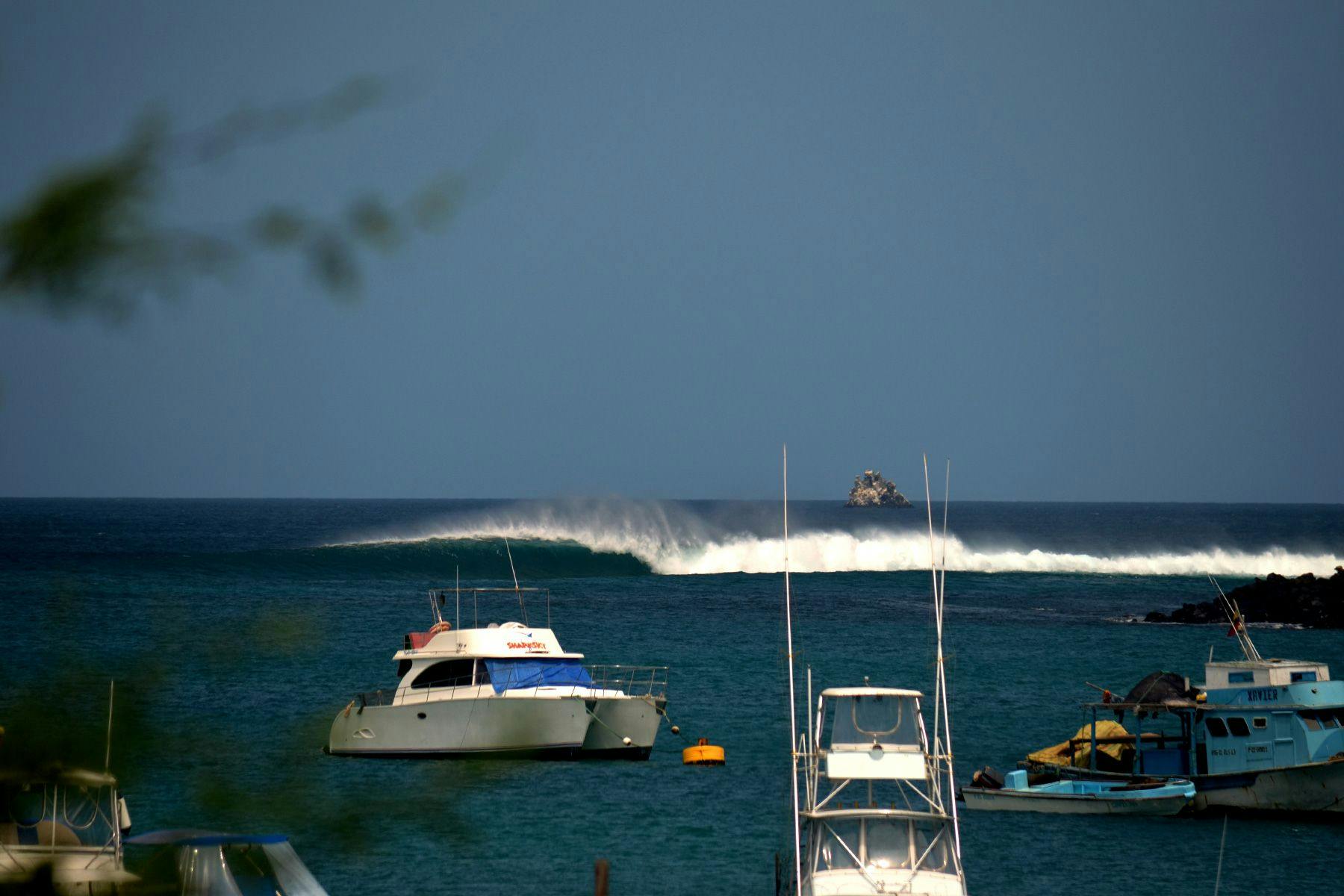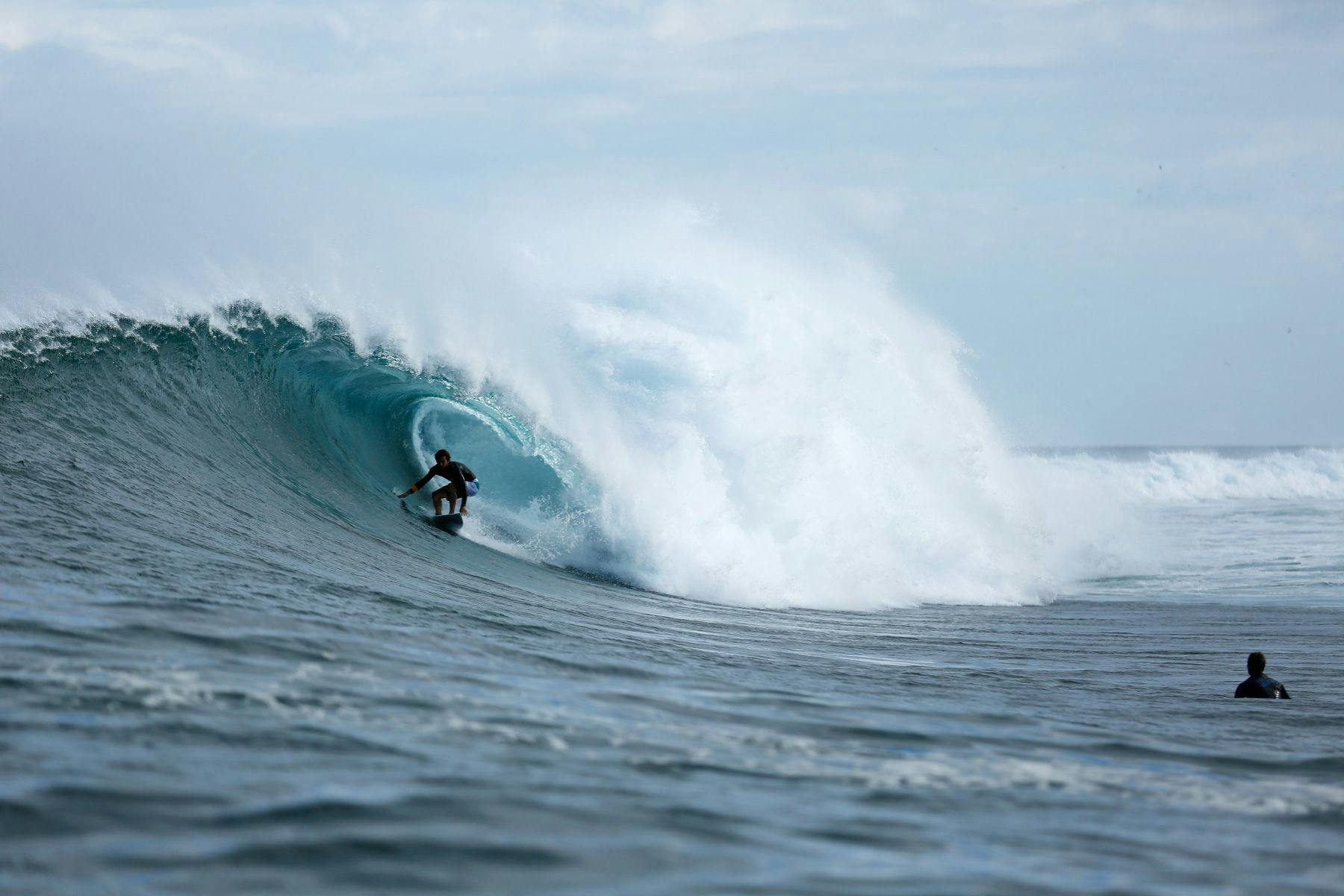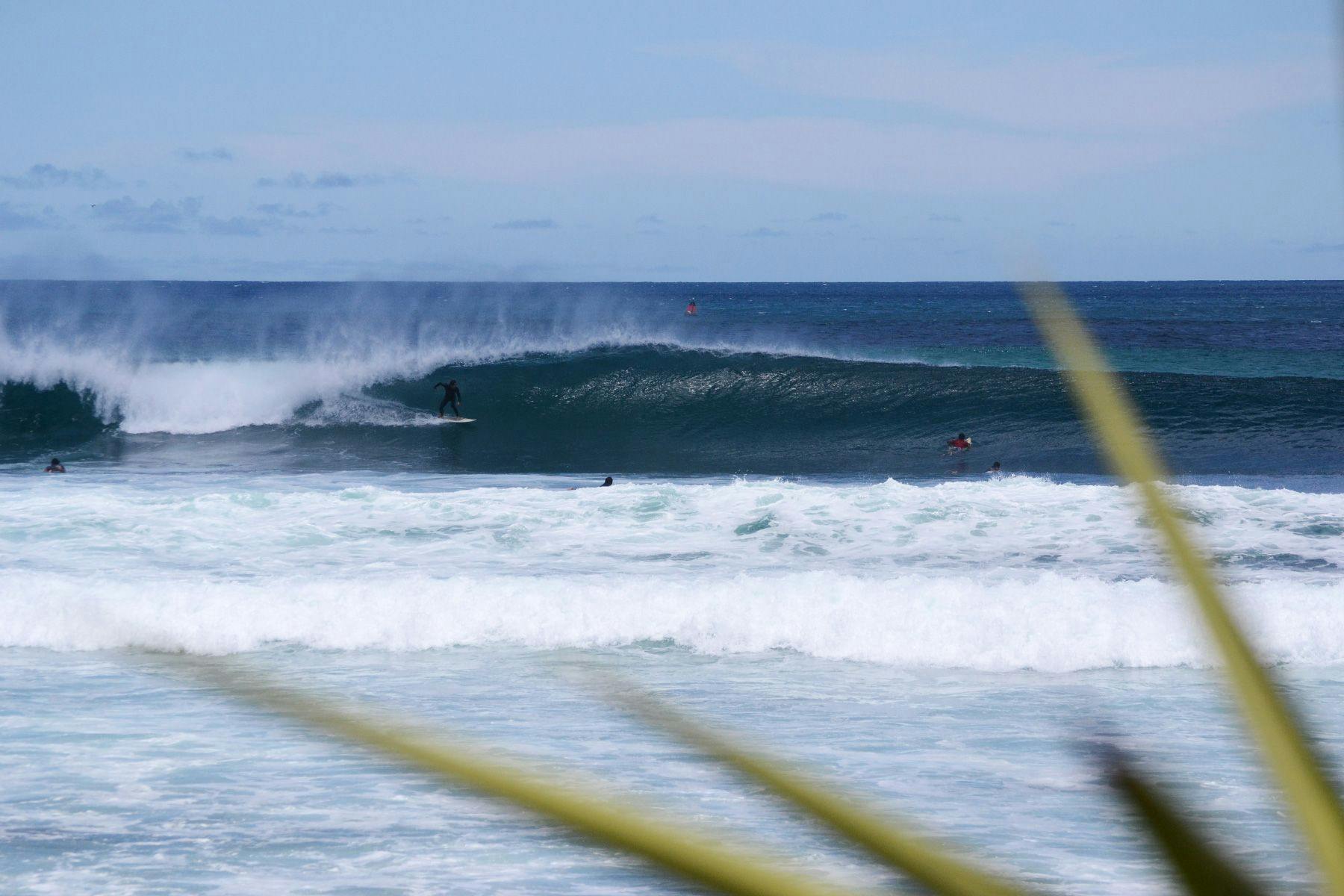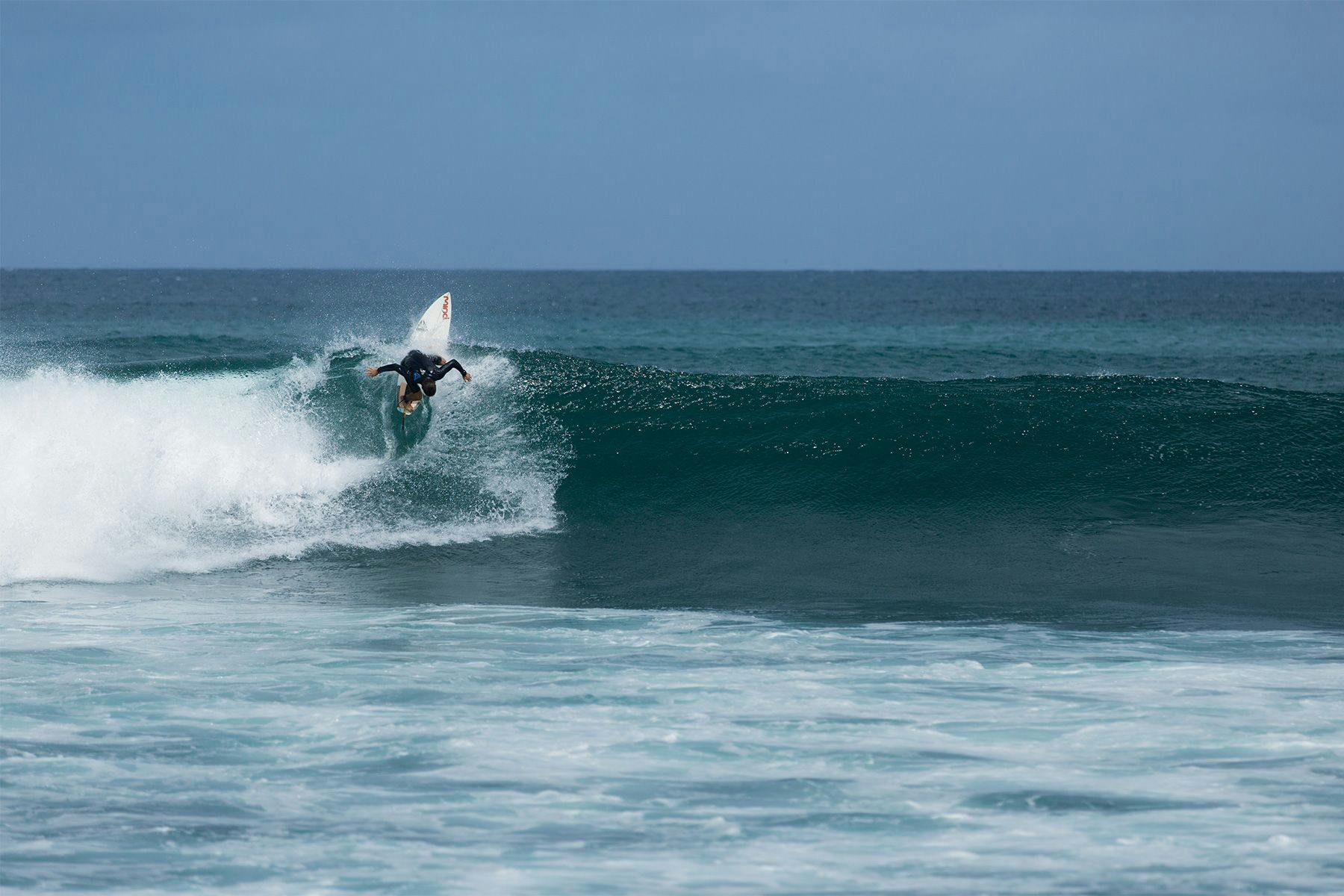
Among the many jewels that the Pacific Ocean has to offer, the Galapagos Islands are surely one to draw the attention of surfers. Not only does the archipelago hold great historical and scientific relevance, but it has an incredible combination of world-class waves, friendly atmosphere and accessibility, making it a highly tempting option for a surf trip, regardless of seasons.
The archipelago is located right on the Equator, roughly 900km (550miles) from mainland Ecuador – the country to which it belongs – and consists of 18 main islands with 7,880 sq km (3,000 sq mi) of land that spread along 45,000 km (17,000 sq mi) of Pacific waters, forming the Galapagos National Park. A total of 70,000 sq km (27,000 sq mi) of ocean that surround the archipelago constitute the Galapagos Marine Reserve and together with the National Park were declared a UNESCO World Heritage Site.
Its geographical position means it’s affected both by northern and southern hemisphere natural systems, such as the Humboldt Current that brings cold nutrient-rich waters from the south, thus making the area a sanctuary for marine wildlife. The semi-arid volcanic setting, together with interesting endemic flora and fauna, gives the place a strong character. When exploring the land you often feel like you’re walking on the moon; when submerged in the sea, you’re amongst astonishing creatures who’ve called those waters home for millennia.

When merging these aspects and a search for waves, the island of San Cristobal offers the best surfing conditions combined with the wild Galapagos feel. It is the second main island of the archipelago, with an area of 550 km2 (215 sq mi) and it’s busy enough for a comfortable stay, with all modern amenities at hand and even a brand new hospital. San Cristobal is not as densely populated as its neighbour Santa Cruz, nor as quiet as Isabela, but rather something in between. Its coastline runs for around 130km (80mi), of which most is only accessible by boat and/or with local guides such as the team at LavaWave Surf. Still, the bits that are bureaucracy-free happen to be where the best waves are.

Considering the areas that don’t require permits and looking from north to south, the spot of Punta Carola is the first option for a surf in San Cristobal. It’s located on a little bay overlooked by a lighthouse, about 10-15min walk from the village of Puerto Baquerizo Moreno, the capital of the Galapagos. This is a north swell spot and it’s prime season runs from November to April, when early sessions are a wise option in order to enjoy un-crowded moments.
The wave breaks on the right tip of the bay (looking from the beach) and runs over a rock bottom, until it reaches sandy patches and eventually dies off at the beach. Swells start working from 1m (3ft) and hold up to 3m (9ft), when the wall shows its full-power and offers several enjoyable barrel sections for a good 100m or so.
Punta Carola is a fast wave and requires good wave-reading skills and quick turns to be surfed to its full potential. The barrels are wider on low tide and the best moment to paddle out is when the tide is rising. It’s a spot that may require a lot of energy, so it’s good to time your paddle and watch the wave from shore for a while, in order to be comfortable when out there.

Across the bay from Punta Carola is the spot of El Cañon, a left point break that, if the swell approaches perpendicularly to the peninsula, may or may not also offer the option of a fast and sucky right hander. This spot is named after a canon located right in front of the break and is easily accessed via a military base (where you’ll need to show ID), within a 10-15min walk from the village.
Much like Punta Carola, this is a November to April break, favouring N-NW swells, but also providing good waves in other times of the year as the coastline sits at a wider angle to receive SW-S swells. To paddle out there’s the more adventurous option of walking over the rocks straight in front of the canon, or the more conservative way via a small beach 100 meters or so before the canon, where sea lions usually lay in the sun.
Its rocky bottom produces long lines, predominantly in rising or falling tides, making it a tricky spot to surf if the tide is too low. El Cañon can hold up to 2/2,5m (6/8ft) of swell without losing its cleanliness, but requires constant awareness so not to get caught on the inside after a wipe out, as the rocks are sharp and there’s little space between the impact zone and the rocks. Depending on swell direction there are a couple of sections where the wave can form a barrel, but it’s usually when taking off deep on the outside. It is a rather consistent spot with a fun and manoeuvre friendly left hander, but can get crowded due to its easy accessibility.

The next spot down the coast can be reached by a U$ 10 return boat ride or by following the same road as El Cañon, that eventually turns into a dirt track and after 20 minutes leads to El Tongo (or Tongo Reef), a very fun and long left point break.
This break is usually divided into three peaks / take-off zones: Pico (the outer section only advisable for experienced surfers); Medio (the middle section) and Bajito (the inside section and best option for beginners). There’s a paddle out zone for each peak but many choose to paddle out and in from the beach in front of Bajito, so to avoid cuts and bruises from the slippery and sharp volcanic rocks that surround the coastline.
From the outer take-off zone all the way to the inner one, there’s a rock slab that produces more punchy and fast sections, that eventually turn into fat walls once the wave reaches the patches of sand under the inner take-off zone.
On good days it’s possible to take-off at Pico and connect the line all the way down to Bajito, exhausting your legs and widening your smile for a good 300 meters. The best swell direction for El Tongo is from SW-S and the wave breaks more consistently from April to November. This is a rather isolated area of San Cristobal island and there’s no civilization to be seen within a 30 minutes walking radius – that being said, bring enough water and food for a full day of surfing. Not being that easily accessible means crowds are not as significant and the fact the spot is not so tide-dependant makes it worth the mission at any time of the day. A good session here will make your entire trip to the Galapagos worthwhile.

Finally is La Loberia – the furthest from town yet most versatile break of San Cristobal. It’s easily accessible by a U$ 2 taxi ride (price from 2015) that will take you to the entrance of a trail, from where you’ll need to walk another 5-10min until reaching the beach. There are opening and closing times for the trail and a park ranger controls the numbers of visitors. The name “La Loberia” means “a place in the coast inhabited by sea lions” -who in this case appreciate the distance – and it’s a good beach to spend the day swimming with turtles and rays when the swell is small or the tide is turning.
The wave itself starts working from less than 1m (3ft) and is very consistent throughout the year. The spot can hold up to 4m (12ft) swells and the moment it reaches overhead is when it begins to show its teeth. On the bottom, there are multiple slabs of volcanic rock that form breaks that go both right and left, with peaks and take-off zones varying according to swell direction but always producing hollow and fast walls. At low-tide the occasional rock may pop out of the surface so it’s important to study where to sit, or time the session to the rising or falling tides above dead low tide. La Loberia works on swells from the south and south-west, while any northern wind is ideal. Being relatively far away from town makes it the last option when the waves are good elsewhere, but La Loberia’s power and versatility can surprise those willing to “walk the extra mile”. Bring reef boots to shortcut the long paddle from the beach and always watch out where you step (urchins).

Surfing aside, The Galapagos Islands should be on the top of the list of any water and outdoor lover. There certainly isn’t a lack of things to do – from bike rides, beach hang-outs, volcano hikes and snorkelling trips – and you may get dizzy with the amount of islands and areas of the National Park to explore. Considering its isolation, prices for accommodation and food are not as high as they could be and there’s a wide range to choose from. The main issue is always getting there, but once you’ve landed options are endless and some don’t even feel the need of moving about too much, preferring to sit by the esplanade, eating ice-cream and watching the sea lions walk around, as the sun sets in the horizon.
When: Anytime – November to April for spots like Punta Carola and El Cañon; April to November for El Tongo or La Loberia -.
Where: Fly from Guayaquil (mainland Ecuador) to Baltra Airport of San Cristobal Airport (National Park Fee U$S 100,00)
How: A selection of short-boards and a gun if the swell picks up. There are no longboard-friendly spots, but a fish may be considered for smaller days. Bring all accessories needed and don’t rely on a variety of surf shops.
Why: World-class waves in a friendly atmosphere with exotic surroundings and wildlife.
Our thanks to LavaWave Surf for their assistance in compiling this article.